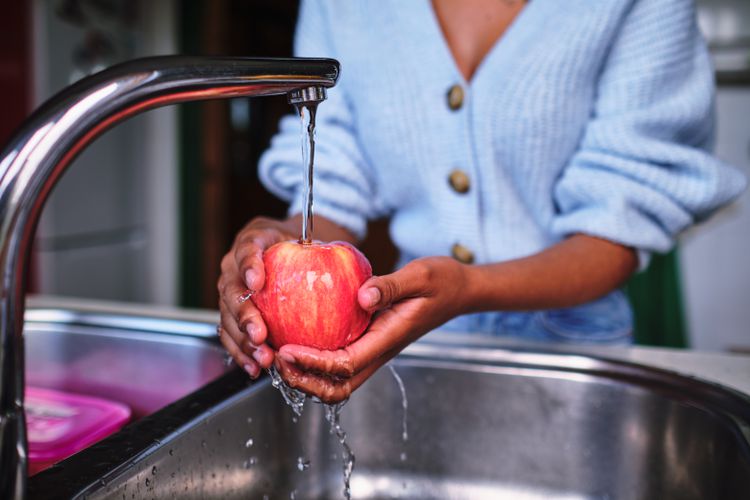How to Wash Apples to Clean Off Dirt and Pesticides, According to Science

Whether you scored your apples from a tree in your backyard, an orchard, a farmers market, or the supermarket, one of the most essential steps before you snack on or cook with the fruit is to ensure it’s free from dirt and as many pesticides as possible.
As you’re seeking out and stocking your favorite types of apples, our guide for how to choose and store apples might come in handy. And when it comes time to enjoy them, here’s how to slice and freeze them to preserve your bounty. But in between storing and slicing, it’s important to consider how to wash apples.
Yes, we know this might sound elementary. Just run the apples under cool tap water, right? Not so fast. There’s actually a better way to clean apples (and it’s not with produce wash). Our Test Kitchen and scientific research agree that this is the ultimate solution for how to wash apples.
Sarah Brekke, M.S., Better Homes & Gardens Test Kitchen brand manager
Why You Should Wash Apples
Before you eat any produce—including kinds that you plan to peel, like bananas—the FDA recommends washing produce well under cool running water to remove dirt, any present germs or bacteria, and to rinse away as much of the fungicide and pesticide residue as possible.
Supermarket apples in particular might look shiny and spotless, however, when the Environmental Working Group (EWG) tested raw apples, they found that they’re coated in four different pesticides, on average.
“If you’re concerned about pesticide and fungicide residues on apples, take the extra step of peeling the skins off before eating,” suggests Sarah Brekke, M.S., Better Homes & Gardens Test Kitchen brand manager. But this doesn’t mean that you can skip cleaning the fruit. “Always wash apples before peeling because the vegetable peeler or knife will transfer any surface contaminants into the flesh if you don’t.”
After comparing basic tap water, another solution, and a baking soda soak, researchers found that our Test Kitchen’s go-to method for how to wash apples—with water and baking soda—was the most effective at removing the most pesticide residue.
Keep in mind that a tiny amount of pesticides can make their way into the outermost layer of the apple flesh, so even if you peel them, you’ll still be consuming a little. And if you peel the apples, you’ll be increasing your food waste quota (compost is a good solution!) and you’ll sacrifice the vitamin A, potassium, fiber, and other health-boosting elements that are richest in apple skins.
When and How to Wash Apples
“Wash apples just before eating so that excess moisture doesn’t accelerate the spoilage process,” Brekke says.
To wash apples the science-backed Test Kitchen way:
- Fill a large bowl with 2 cups cold water and 1 teaspoon baking soda (or a double or triple batch of this to allow for room for the apples you plan to snack on, cook, or bake with). Using a large spoon, stir to combine.
- Add the apples and allow them to soak in the baking soda bath for 12 to 15 minutes.
- Using clean hands, lift each apple out of the bath and rinse it under cool running water. Employ a produce brush or clean dishcloth to gently remove any residue from the skins.
- Pat the surface of each apple dry with a clean dish towel or paper towels.
If, at this point, you slice the apples, you don’t need to wash the pieces again before consuming them. But soaking apple slices in water or salt water are two of the best ways to keep apples from browning, according to our Test Kitchen’s trials.
“Soaking apple slices can help to slow the enzymatic browning process,” Brekke adds.
How to Tell if Apples are Past Their Prime
You can feel free to skip washing apples and place them directly in the compost or discard them if they have any of these signs of spoilage:
- Large bruised areas
- Wrinkly skin
- Leaking moisture
- “Off” aromas